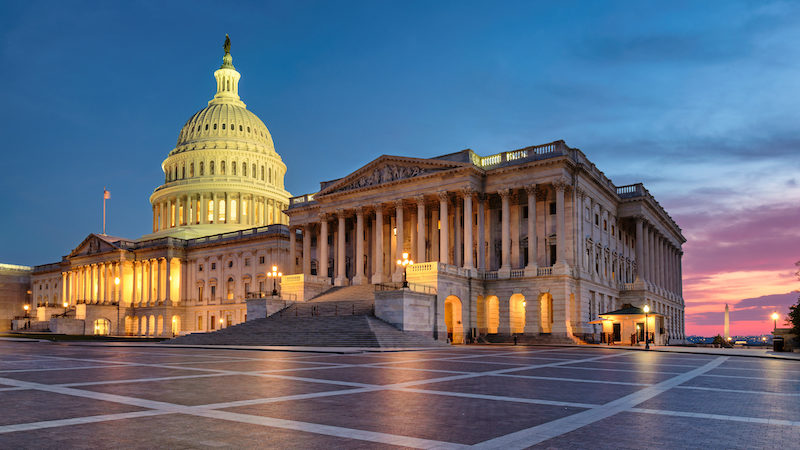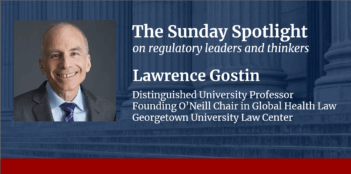
Agencies must ensure proper use of funds, but complex compliance rules may stunt noble policy goals.
The Trump Administration has been trying to block oversight of coronavirus relief spending under the $2 trillion CARES Act passed in March. This is the accountability story about the CARES Act that has received the most public attention. It is a deeply troubling story, especially because the Administration has shown a penchant for pushing the envelope when it comes to executive discretion over spending. The recent presidential memorandum purporting to create a new unemployment assistance program out of billions of dollars of CARES Act funds appropriated for other matters is only the latest example.
But CARES Act funding has a second important accountability story, too, even though it is not being framed as one. Under the prevailing account of this second story, inefficient government bureaucracies are preventing billions of dollars in federal grants and related forms of financial assistance from reaching communities and organizations that are desperately waiting for the aid. Or, in another version, inefficient state and local governments have barely spent any of their CARES Act funds, and so they can hardly be said to need any more.
Although this second story is presented as one about bureaucratic delays rather than any allegation of intentional wrongdoing, it is also about accountability for federal funds. In fact, rather than stemming from government inefficiency, the delays stem from the intricate oversight system that pervades the intergovernmental grant system. Understanding that system helps explain why the delays are happening—and what to do about it.
There are three distinct kinds of funding delays at issue.
First, some of the funding is delayed getting out the doors of federal agencies. For example, as of mid-June, billions of dollars for food banks, nursing homes, services for seniors and homeless people, rural broadband, and personal protective equipment for firefighters remained stuck in Washington, D.C.
Second, other funding remains awaiting disbursement at the state or county level, instead of being allocated to hard-hit local governments awaiting their share. For example, the Coronavirus Relief Fund allocated $150 billion directly to states and individual jurisdictions over 500,000 people with the idea that smaller jurisdictions would receive a share of this funding as allocated by their states. But in many states, these smaller jurisdictions have yet to receive any money, even though they, too, are struggling from both the health and economic consequences of coronavirus.
Finally, other delays still appear even when jurisdictions have the money in hand as they figure out what the money can be spent on. For example, would ensuring running water in the Navajo Nation, or attending to economic devastation in a community under stay-at-home orders but without many COVID-19 cases, count as “necessary expenditures incurred due to the public health emergency”?
All three kinds of delays are a completely predictable result of the complex intergovernmental funding system that has been in place in the United States for years—a system that derives not from the CARES Act but from the ordinary infrastructure designed to ensure accountability over some $700 billion in aid to state, local, and tribal governments each year.
Consider, first, the delays at the agency level. Although the current criticism is that agencies are moving too slowly in obligating their funds, agencies also face conflicting complaints about moving too quickly and providing insufficient oversight over the funds they let out the door. Agencies are regularly lambasted by the U.S. Government Accountability Office, inspectors general, and Congress for “improper payments”—payments that either should not have been made at all or that were made in incorrect amounts.
The Pandemic Response Accountability Committee has highlighted improper payments as a key area of concern as CARES Act funding is distributed. That agencies have not yet awarded all of the money provided by the CARES Act is attributable to this concern.
In turn, the delays in spending money at the state, local, and tribal level are a result of two additional features of the intergovernmental funding system: the complexity of the rules and the power of the annual audit process.
Many layers of complex grants-management rules existed even before the government enacted the new CARES Act requirements. Each grant program has its own fiscal rules, all designed to target funds toward the particular policy area Congress is trying to reach with the program. In addition, to prevent fraud, waste, and abuse of federal funds, the Office of Management and Budget (OMB) issues a set of uniform administrative requirements for both the awards process and the controls that grantees must maintain over their use of federal funds. OMB also promulgates cost principles governing how grantees may use their federal dollars.
Each agency incorporates these various rules into the funding programs it oversees, while also sometimes making agency-specific tweaks, as another layer on top of its own grant administration and program rules. States receiving federal grant funds also have their own grants-management rules, which may vary depending on whether the funds they provide local jurisdictions are state or federal funds.
How CARES Act funding intersects across grant programs with these other layers of rules is far from straightforward, as is apparent from the existence of multiple sets of guidance documents issued over the last few months by OMB, the U.S. Department of the Treasury, and other agencies. Jurisdictions receiving funding from many different agencies and different programs within an agency therefore face a tangle of confusing rules.
Jurisdictions need to move through this maze carefully because of the power of the annual audit process under the Single Audit Act. This law requires a thorough audit of each federal funding recipient that receives over a certain amount of total federal funds each year. This audit is an investigation of every measurable statutory and regulatory requirement to which the funding recipient has committed. Since the audit is decentralized, each funding recipient must engage an auditor, pay for the audit, and submit the results of the audit to the agency.
There are real consequences for making errors when jurisdictions take on new funding commitments under the CARES Act and also implement their ongoing federal funding under new emergency situations. Although agencies almost never withhold funds for grantees’ failure to achieve program goals, agencies stringently enforce the grants-management rules through the audit process. Funding recipients are regularly required to repay funds for unintentional violations of the grants-management rules.
For example, as state health agencies continue to struggle with COVID-related expenses, they face the prospect of having to repay tens of millions of dollars to the federal government—not because they committed fraud or engaged in any intentional misuse of federal dollars, but rather because of administrative errors such as insufficient documentation for spending funds they received five or ten years ago.
The delays in spending CARES Act funding are therefore not a result of generic poor bureaucratic management or evidence of a lack of need but rather a consequence of sincere administrative efforts to comply with the law’s accountability regime for federal grants.
But to diagnose why the delays are happening is not to approve of them. These delays reveal that the United States needs to recalibrate its grants management regime.
Although the grants management regime, with its complex rules and powerful audit process, provides an important accountability structure for federal funds, it can create several serious problems, too.
Most significantly, it can hinder accomplishment of the very policy aims that have motivated Congress to make funds available in the first place. Congress passed the largest relief bill ever because the need for support is dire. Communities need support for food banks, personal protective equipment, and broadband access yesterday, not next month.
In addition, funding recipients can spend so much time on administrative compliance that program operation suffers. Relatedly, funding recipients sometimes decide to play it safe for the auditors rather than proposing more effective or innovative program designs.
There is a longer term problem as well. Delays in spending money and focusing on compliance at the expense of achieving program goals can lead Congress to believe that the money was not needed after all. Congress may then cut or fail to extend a program, even though the need is still there, because it fails to understand that the rules governing federal funding sometimes undercut the policy purposes for which the funding is designed. Meanwhile, in the executive branch, unspent funds can appeal to a President searching to repurpose money for his own policy goals.
So, what is to be done?
Most immediately, agencies must increase efforts to get coronavirus funds out the door while encouraging funding recipients to do the same. Although OMB’s role in thwarting oversight in the Trump Administration is concerning, OMB has done an admirable job in developing temporary flexibilities for administrative burdens and encouraging agencies to do so.
OMB and agencies ought to use this opportunity to evaluate which flexibilities ought to be extended in the long run, trading burdensome compliance activities for meaningful commitments to performance and continuous learning.
Agencies have largely done a good job of developing guidance on new funding streams. Nonetheless, the guidance can be difficult to navigate for state and local jurisdictions receiving funds from multiple agencies. Jurisdictions should not need to pay for a subscription to a private grants information network to see all of the relevant rules in one place. Instead, the Pandemic Response Accountability Committee should host all relevant documents on its website. It should also hold regular listening sessions with funding stakeholders to ensure that cross-agency concerns are addressed, and it should facilitate inter-agency responses to concerns through its parent organization, the Council of the Inspectors General on Integrity and Efficiency.
Agencies should also do more to develop safe harbors for confusing rules. They should provide specific examples to funding recipients and give auditors documentation on which to rely in subsequent audits. For example, the Treasury Department has developed a presumption under the Coronavirus Relief Fund for how to account for certain payroll costs “as a matter of administrative convenience in light of the emergency nature of this program.” Agencies ought to articulate more of these presumptions.
In addition, agencies should encourage funding recipients’ creativity in meeting jurisdictions’ specific needs, as long as jurisdictions document their spending and explain their rationales in ways that are tied to the CARES Act and to COVID-related guidance. Jurisdictions ought not to be deterred from making sensible spending decisions out of a fear that they will later be penalized for trying to help their communities.
In the longer term, Congress and agencies alike ought to do more to break down silos between work on substantive policies that federal funding is intended to support and work on administration and audit of that funding. Failure to attend to the interaction between these categories presents a danger that administrative and audit requirements will undermine the funding’s policy goals.
Ensuring accountability for federal funding is critical, but we should not do so at the expense of impeding a program’s valuable policy objectives.
This essay draws on the author’s recent article about the intergovernmental grants management system published in the Yale Journal on Regulation.




